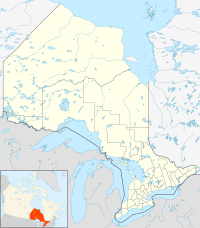One Man Lake 29 facts for kids
Quick facts for kids
One Man Lake 29
|
|
|---|---|
| One Man Lake Indian Reserve No. 29 | |
| Country | |
| Province | |
| District | Kenora |
| First Nation | Wabaseemoong |
| Area | |
| • Land | 11.17 km2 (4.31 sq mi) |
One Man Lake 29 is a First Nations reserve. It is found on Umfreville Lake in the Kenora District of Ontario, Canada. This reserve is one of the lands belonging to the Wabaseemoong Independent Nations.
Contents
What is One Man Lake 29?
One Man Lake 29 is a special area of land set aside for a First Nations community. It is officially known as an "Indian Reserve." These lands are important for the culture and traditions of Indigenous peoples in Canada.
Where is One Man Lake 29 Located?
This reserve is in the province of Ontario, which is in central Canada. It is specifically located in the Kenora District. The reserve sits near Umfreville Lake, which is a body of water in the area.
Who Lives at One Man Lake 29?
One Man Lake 29 is home to members of the Wabaseemoong Independent Nations. This is a group of First Nations communities. They share a common history and culture.
Understanding First Nations
In Canada, "First Nations" is a term used to describe the many different Indigenous peoples. These are the original inhabitants of the land now known as Canada. There are over 630 First Nations communities across the country. Each has its own unique history, language, and culture.
What is an Indian Reserve?
An Indian Reserve is a piece of land in Canada that is managed by a First Nation. These lands are set aside for the use and benefit of First Nations people. They are protected by Canadian law. Reserves help First Nations communities keep their traditions alive. They also provide a place for their members to live and gather.
About the Wabaseemoong Independent Nations
The Wabaseemoong Independent Nations is a larger group that includes several First Nations communities. They work together on important issues. These issues can include land rights, education, and health. Being part of a larger group helps them share resources and support each other.
Their Connection to the Land
Like many First Nations, the Wabaseemoong Independent Nations have a deep connection to their traditional lands. This connection is part of their identity and way of life. They have lived on and cared for these lands for thousands of years.


